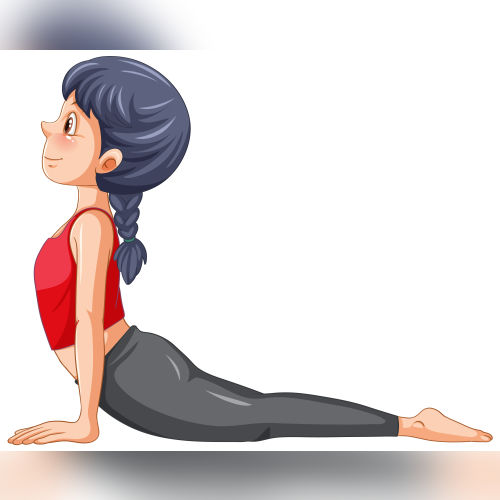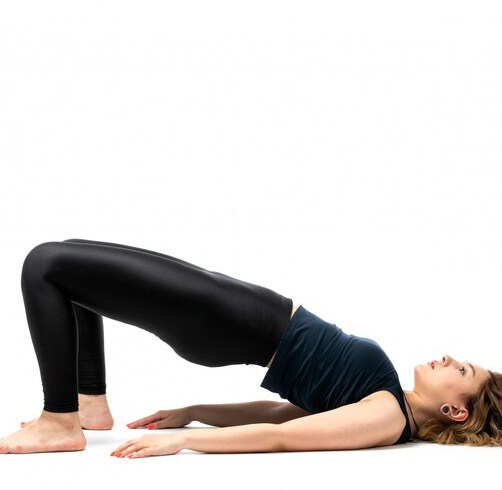7 Effective Yoga Poses and Hormone Balancing Pranayama Techniques for PCOS Relief
- June 26, 2025
- Hema Sood
- 11:08 am
Yoga for PCOS – Natural Healing with Hormone Balancing Pranayama
Polycystic Ovary Syndrome (PCOS) is more than just a hormonal imbalance—it affects your metabolism, mood, energy levels, and reproductive health. While medications offer short-term relief, many women are turning to yoga for PCOS and hormone balancing Pranayama to manage their symptoms naturally.
The gentle combination of mindful movement and controlled breathing can help regulate your cycle, reduce stress (a major trigger for PCOS), and balance key hormones like insulin and cortisol.
Let’s explore the 7 best yoga poses and hormone balancing pranayama techniques to restore your body’s natural rhythm.

Why use yoga poses and hormone balancing Pranayama?
Yoga isn’t just a workout—it’s a healing system. When combined with hormone balancing pranayama, it becomes a powerful tool to:
- Regulate menstrual cycles
- Improve insulin sensitivity
- Reduce bloating and belly fat
- Calm the nervous system
- Support ovulation and fertility
- Ease mood swings and anxiety
The key? Practicing consistently and gently. You don’t need to be flexible—just willing.
1. Supta Baddha Konasana (Reclining Butterfly Pose)
This relaxing pose opens your pelvic area and stimulates blood flow to your reproductive organs—making it ideal for women with PCOS.
How to Do It
- Lie on your back
- Bring the soles of your feet together, knees fall open
- Place pillows under your knees for support
- Rest your hands on your belly
- Breathe slowly for 3–5 minutes
Why it works: Reduces tension in the abdomen and supports hormone balance

2. Bhujangasana (Cobra Pose)
This gentle backbend tones your ovaries and adrenal glands—key areas affected in PCOS.
How to Do It
- Lie face down
- Place your hands under your shoulders
- Inhale and lift your chest off the mat
- Keep your elbows slightly bent
- Hold for 5 breaths
Bonus: Improves digestion and spinal flexibility.

6. Anulom Vilom – Alternate Nostril Breathing
Let’s now introduce hormone balancing pranayama.
Anulom Vilom is one of the most calming and balancing breathing exercises. It directly reduces cortisol (stress hormone) and balances the left and right energy channels.
How to Practice
- Sit comfortably with a straight spine
- Close the right nostril with your thumb
- Inhale through the left
- Close left, exhale through right
- Continue alternating for 5–10 minutes
Do it daily for best results.

Bhramari – Bee Breath for Hormonal Calm
This soothing technique lowers stress and improves emotional stability—often disrupted in PCOS.
How to Practice
- Close your ears with your index fingers
- Take a deep breath in
- Hum gently during the exhale like a bee
- Repeat 5–7 rounds
Why it works: Activates the parasympathetic nervous system and supports mood regulation.

How Yoga Poses and Hormone Balancing Pranayama Work Together
Practicing yoga for PCOS in combination with hormone balancing pranayama creates a balanced approach:
- Movement improves blood flow and insulin sensitivity
- Breathing reduces inflammation and regulates stress hormones
- Stillness activates natural healing processes in the body
This Yoga Poses and Hormone Balancing Pranayama combination brings the endocrine system into alignment—helping manage PCOS symptoms gently and effectively.
Lifestyle Tips to Enhance Your PCOS Yoga Routine
Eat Hormone-Friendly Foods
Include whole grains, leafy greens, flax seeds, and turmeric in your diet.
Practice at the Same Time Daily
Morning or evening routines help regulate the body’s clock.
Avoid Over-Exercising
PCOS doesn’t respond well to high-intensity workouts. Gentle yoga is far more beneficial.
Key Takeaways
- Yoga for PCOS supports natural hormone regulation and reduces common symptoms like bloating, irregular periods, and anxiety.
- Hormone balancing pranayama techniques like Anulom Vilom and Bhramari are safe, beginner-friendly, and effective.
- Consistency is key—just 15–30 minutes daily can create visible changes in your cycle and mood.
Managing PCOS naturally doesn’t have to feel overwhelming. With just a few poses, a quiet space, and 15 minutes a day, you can support your hormones, regain energy, and feel more like yourself again.
Start small. Stay consistent. Let Yoga Poses and Hormone Balancing Pranayama guide you’re healing.
FAQs
Yes, consistent yoga practice helps regulate hormones, improve metabolism, and reduce symptoms.
Morning is ideal for energy and metabolism, but evening sessions help with stress relief.
Start with 5–10 minutes daily and gradually increase.
Absolutely! A short yoga flow followed by 5 minutes of breathing is a powerful daily ritual.
Also Read
10 Best Yoga and Pranayama Techniques for Daily Health and Inner Peace



